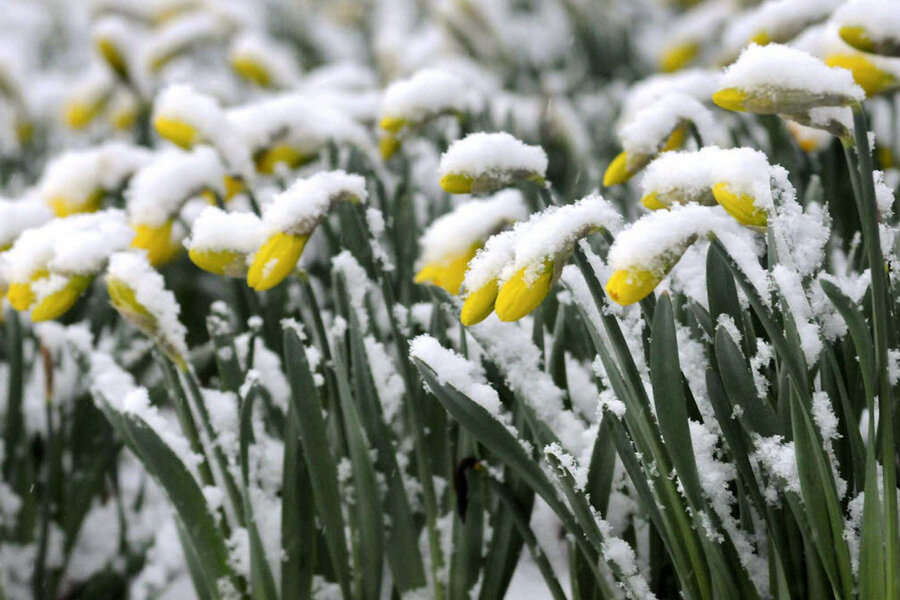What you need to know about the weird weather in the northern US
Loading...
Spring turned two-weeks old on Sunday, though one wouldn’t know it, judging by the weather. A storm brought snow and winds of up to 71-mile-per-hour across the Midwest Saturday and into the Northeast region by Sunday.
By Sunday afternoon, trees and power lines were downed, while snow had piled up in some areas, dashing hopes of an early spring for hundreds of thousands of people facing frigid temperatures and power outages. Nine people had been reported injured by Sunday afternoon, mainly due to falling trees on cars and buildings.
Western Michigan saw 9.5 inches of snow over the weekend, while Wisconsin recorded 7 inches near the Twin Lakes, and 5.5 inches of snow was seen in parts of Minnesota. Six inches of snow were reported in northwestern Pennsylvania, with 9 inches in upstate New York, through parts of Massachusetts, and declining by a few inches in Connecticut.
"Getting snow in April in the Northeast is not that unusual – the unusual part is not the amount of snow, but more of the cold and the wind that's coming along with it tonight and tomorrow," Weather Channel lead forecaster Michael Palmer said Saturday, according to NBC News. "Wind gusts of 50, 60 miles an hour, plus," he said.
And that is just the beginning. The same type of low-pressure storm system, called an Alberta clipper, will bring more snow and winds through the upper Midwest, Great Lakes, and Northeast into the week, though only a very narrow corridor from northern Michigan to southern New York and southern New England could see another 6 inches of snow into the beginning of the week.
The storm is named after its place of origin, Alberta, Canada, where it begins before moving along at a rapid clip across the northwest United States to the southern Northeast, separating cold air to the north from warm air to the south.
Already, the clipper has caused hundreds of thousands to lose power over the weekend, from Indiana to Ohio to New Jersey, according to The Weather Channel, as it dropped seasonal temperatures 10 to 20 degrees below average for this time of year.
Low temperatures will be in the teens, 20s, and 30s for much of the upper Midwest and Northeast into Wednesday morning, says The Weather Channel, though it will likely feel even colder, given that the freezing temperature will be accompanied by gusty winds.








